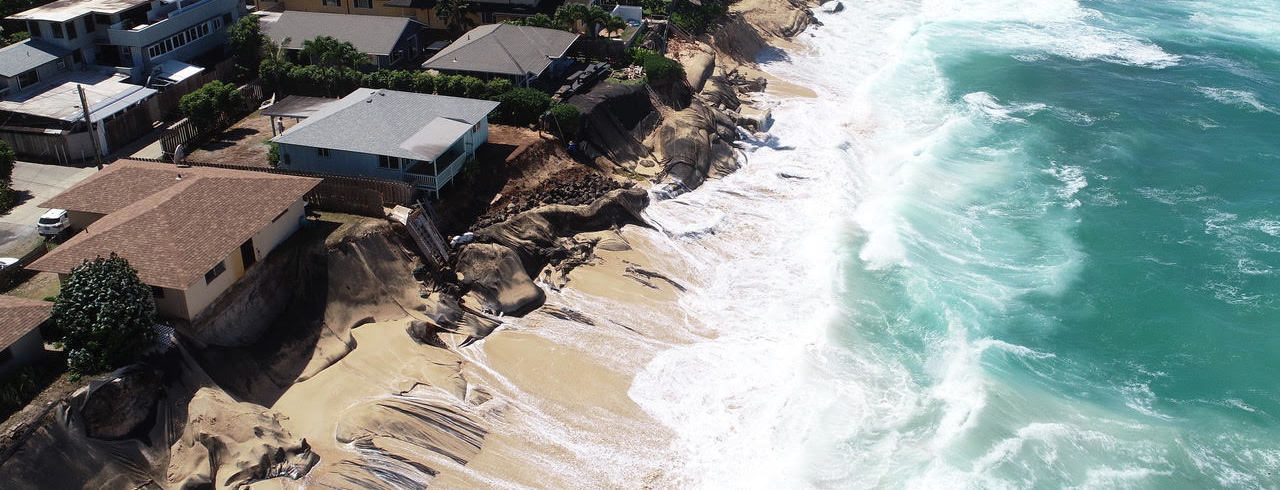
Hawaiʻi just became the first state in the U.S. to pass a law requiring ‘sea level rise’ disclosures in a real estate transaction. While most states, including Hawaiʻi, have laws that require sellers to disclose hazards (e.g. repetitive flooding, fires, tsunami, etc.), currently no state law requires a seller to disclose ‘sea level rise’ concerns.
This new, forward-thinking law simply says: sellers must disclose whether the property lies within the sea level rise exposure area and thus if the property is at risk from sea level rise and coastal erosion.
Hawaiʻi’s new legislation is precedent setting not only because it is the first law of its kind, but the legislation strikes an importance balance of protecting both people's rights and coastal resources. The American Dream, as embedded in our Declaration of Independence, says we all have inalienable rights to pursue happiness, and historically, Americans have looked at home ownership as a stage “in the pursuit of happiness.” However, exorbitant real estate prices, coupled with increasing sea level rise and climate change impacts, is making that dream less possible.
Surfrider firmly believes that every potential homeowner has the inalienable right to know if a home is in harm’s way. This is especially true as sea level rise and climate change impacts exponentially grow. For example, in 2017, the Hawaiʻi Sea Level Rise Vulnerability and Adaptation Report estimated that 6,500 structures will be chronically flooded, 28 miles of coastline will become impassable, and 20,000 residents will be displaced with a 3.2 feet rise in sea level. Additionally, another study, determined Hawaiʻi is at imminent risk of losing 40% of sandy beaches and proactive management is necessary to preserve and protect these public trust lands.
Hawaiʻi’s new law is precedent setting because it faces the reality that rising seas will not only impact infrastructure, but coastal resources as well. Eventually, infrastructure in sea level rise prone areas will be swallowed by the ocean, and remaining structures will continue to impact coastal resources and also impact public trust lands. In 1978, Hawaiʻi passed a law (Hawaii Coastal Zone Management Act) that requires the state to protect beaches and coastlines. The newly adopted sea level disclosure bill will greatly help the state meet its coastal protection mandate.
The importance of SB474
- Ensures that buyers understand/acknowledge the risks associated with purchasing and owning property in the coastal zone;
- Strengthens the state’s and counties’ abilities to deny emergency permits for shoreline hardening structures for private property threatened by coastal erosion (as the buyer willingly assumed the risks when they purchased the property).
- Offers a science-based solution to the problem of sea level rise and coastal erosion.
Additional information about SB474
- Takes effect May 1, 2022
- Properties affected are those that fall within the 3.2-foot sea level rise projections by 2050 (see the Sea Level Rise Exposure Area Map (SLR-XA)).
- Supported by the Hawaiʻi Association of Realtors. Disclosure is already required in flood and tsunami zones and the real estate industry is equipped to adopt an additional disclosure statement into their transactional paperwork.
- The Sea Level Rise Exposure Area Map (SLR-XA) is publicly available online.
- Recent updates in the last year now make it possible to easily identify properties in the Sea Level Rise Exposure Area down to a specific TMK.
- Using SLR-XA is more comprehensive than “beachfront” as it takes into account the combined impacts of SLR (e.g. flooding and coastal erosion).
- The State of Hawaiʻi is required by law to protect public trust lands, which include beaches and coastlines.
For additional reasons why this new law is important, check out the blog from Surfrider's Hawaiʻi regional page.
